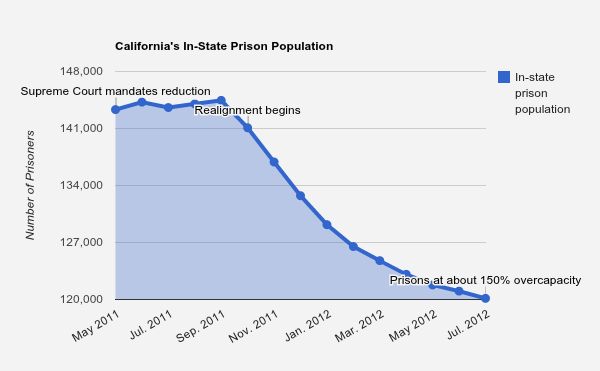Depends whom you ask (real helpful, huh?).
On the one hand, the state has significantly reduced its prison population since realignment went into effect last October. At the end of September 2011, there were 144,456 inmates in the state's 33 prisons, according to the California Department of Corrections and Rehabilitation. (Note: that does not represent California's total prison population, which also includes prisoners in in-state and out-of-state private facilities, and those in work camps).
California's 33 prisons are designed to hold about 80,000 prisoners (based on one inmate/cell). So at the start of realignment, the prisons were at about 180% overcapacity.

By the end of July 2012 the inmate population had been reduced to just over 120,000, or 150 percent of capacity. So over the last ten months, California's 33 prisons shed more than 24,000 inmates. And that puts the system within reach of meeting its court-ordered goal of getting population down to about 110,000 (or 137.5 percent capacity) by June 2013.
All in all, sounds pretty good.